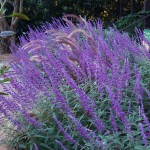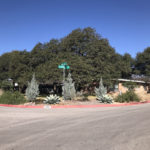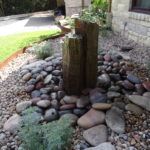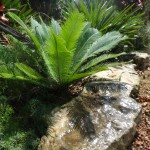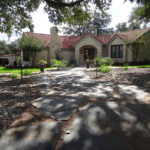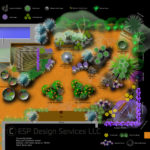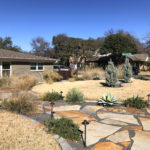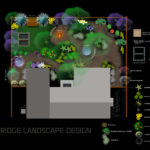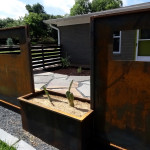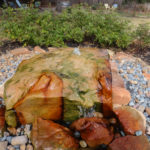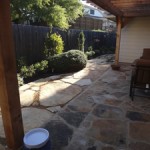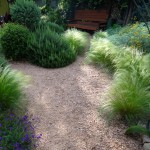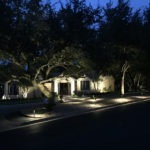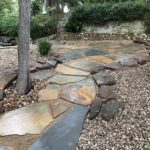
“Look Maggy the mainframe has intercepted a sub-space blog posting that indicates that one of our hatch-ling cocoons has been discovered on the, wait one minute, fourth, no the third planet from the sun in the Milky-way system. Set an intercept course immediately”.
“Course laid in Hamish.”
This was the disturbing gooey, alien scene inhabiting
one of my weeping bamboos, and it covered
quite a large area! I have never seen anything
like this before, any ideas anyone?
My best guess is bamboo mealy bug.
I investigated a little deeper into the sticky interior…
And I pulled out what I first thought was a marinated
grilled quail (I always garden in white forensic gloves),
then quickly realized that I needed to make some
serious phone calls.

“Scully this came out of ESP’s
weeping bamboo!”
“I know Mulder, but there is something
even more disturbing you need to see on
ESP’s front sidewalk, it may be related”…
“I believe everything. And l believe nothing. I suspect everyone. And l suspect no one. I gather the facts, examine the clues… and before you know it, the case is solved!”

Someone had committed a crime on my sidewalk and believe me it wasn’t for the faint hearted. I applied pressure to the area with one of my digits, but sadly the fruit died in my fingertips.

The interior of the wound looked just a little too life-like for comfort.
My prickly pear dropping a whole bunch of ripe fruit right now.


The Coat of Arms was designed by A painting of what Tenochtitlan would have looked like
Francisco Eppens Helguera,
a famous Mexican Architect .
The Aztec people were guided by god Huitzilopochtli to seek a place where an eagle landed on a prickly-pear cactus, eating a snake… After hundreds of years of searching they saw a sign on a small swampy island in Lake Texcoco. Their new home they named Tenochtitlan (“Place of the Prickly Pear Cactus”). In A.D. 1325 they built a city on the site of the island in the lake; this is now the center of Mexico City…Amazing!
The plant depicted on the coat of arms is a nopal cactus.
Prickly Pear Cactus have been
a staple food of Native Americans
for centuries. Some
species were introduced into
North America from tropical
America. It is sold in Mexican
markets as “tuna.”
Prickly pear juice can be used to
make jelly, conserve, marmalade
and even poured on salads. And if you
are feeling like a real party animal
mix the juice with 7-Up or ginger ale
and you will have a drink similar to a:

The fruit of prickly pears, also goes by the name of cactus figs or Indian fig,
it has to be peeled carefully to remove the small spines on the outer skin
before consumption.
Oh, one more thing, if your hair is lacking a certain lustre,
the gel-like sap of this plant can be used as a hair conditioner!
You can have a refreshing beverage and condition
your hair at the same time!
The mother plant is so huge now. I keep whacking off the low branches to encourage a higher growth habit. These wooden stems are really deceptive, inside their woody looking exterior lies a relatively soft succulent. The hand saw just glides through these boughs, (it makes a nice change to cut through something, actually anything, with less effort than you thought it would actually take!) an extremely rare phenomenon.
Everything but the kitchen sink! My white-trash rain collection “system” looks really attractive dosn’t it?
Oh, and it is a really easy and fast “system” to set up – no plumbing expertise required! One day I will get to this!
Yes as you can see, some rain has finally made it to Central Texas this week, and I am not about to waste a drop of it. With temperatures going up and down faster than the stock market, it is hard to tell if we are in summer or winter.
Just before the cold and wet weather arrived I was basking outside on one of my canvas seats watching one of my Harry Potters casting a spell…

“Tillandsia recurvata”! “Aye’s has a very bad feeling about all of this.”
I had my camera tucked between my legs (for what I believed was safe keeping).
After all the “spells” were executed, the light moving to dusk. we got up and went inside.
I awoke during the night to the sound of rain hitting our metal roof, ahh,
I smiled and resumed rehearsing the sea-shanty I was whistling through my nose.
I can’t quite be sure but at one point I think someone joined in for a short duet.
The following morning I was going through my usual routine; I showered and put on my boots to go feed my fish. This is when I encountered a problem, I never leave the house without my camera, I have learned the shortest journey down my yard (without a camera), always creates the best opportunity for a truly fantastic shot. It is second nature to me now to slip it into my pocket before exiting the house. The problem was my camera was missing…
I scoured all the usual places it generally frequents, the dresser, the bowl, that little shelf that no-body ever uses, nothing. I began to have a really bad sinking feeling. After about half an hour of checking exactly the same places five times, (plus the obligatory peek inside the refrigerator), I glanced out of my window, and with a sort of sixth sense, my eyes fell right on it. I could see it shining on one of the canvas chairs, but what was that reflection above it? Something was terribly wrong.

[Re-Inactment].
It was lying there like an electronic “Ophelia”, submerged under a few inches of our well needed water. I ran outside moaning a dramatic, cinematic, slow-motioned “Noooooooo”! and scooped it from of it’s watery grave. I have no idea what I was thinking, like I could bring it back to life, perhaps it had miraculously survived a cold night under-water? Ridiculous!
I turned on the oven, wrapped it up and gently placed my little waterlogged piece of technology on a low heat for a few hours. It is now residing on one of our heater vents on the floor where it will stay for the next week or so, on the remote chance it will spring back to life again.
“It can happen!”
Lets go back to where all this started…
Ballmoss…Tillandsia recurvata

Nerd alert! Nerd alert! Ne…….
I want to take a break from all the drama happening on the East-side and write a little about this mis-understood bromeliad. We all have it, most of us hate it, but its here to stay so lets take an unbiased look at this woven ball of grass.
First of all, ball moss isn’t really a moss at all, but a true plant with flowers and seed. It is a member of the Bromeliad family, so it is related to the pineapple of all things. Ball moss is an epiphyte, (non-parasitic plant living on other plants), similar to many other bromeliads such as orchids, ferns, and my favorites, lichens.
The common assumption is that ball moss is a parasite, sucking and zapping the strength out of healthy trees like a vampire . Some people also think that heavy infestations of ball moss will cause a tree to decline because leaves can’t get enough light, but ball moss does not like sun, preferring the inner part of the crown of a tree, a place where most leaves are usually dead anyway. These ideas seem to be perpetuated by tree trimmers, oh and do not get me started about leaf-blowers…and time changes!
Most botanists are of the belief that there is no evidence to support any of these fears. It must be noted however, on really heavy infestations a tree may go “into decline” due to the ball moss smothering the buds and limiting circulation to the branch-ends due to the plants circular growth habit. I emphasize here, heavy infestations.

Roots and seed pods. The seeds in these fruits are long gone. The seeds incorporate long hairs which helps them to ride the wind currents and ultimately to stick to something, even chain link fencing!
Ball moss anchors its “pseudo-roots” into the bark, but actually derives no nutrients from the tree, the roots are a securing mechanism only. The plant uses tendrils called “hold fasts” to fasten themselves to branches, and they are extremely effective. It survives by absorbing water and nutrients from the atmosphere. Ball moss “fixes” atmospheric nitrogen and eventually returns it to the soil much like alfalfa and clover plants do. More than likely ball moss does no harm to healthy trees, except to make the “inhabited” trees unsightly in many people’s eyes, for this reason it is generally despised, and aggressively eradicated.
I don’t know if they are still carrying them, but the Big Red Sun used to make some really creative arrangements from these “air” plants.
Poor ball moss! There will always be a “limited” place for you in my post oak.
Besides they make great wands, flamboyant toupees and inexpensive hackysacs.
Some other areas of interest in the patch this wet week…

My Gasteria looking more stomach-like, (and a little flamingo), with every passing day.

The start of a new elephant ear. Kaboom!

This one always confuses me…is this some type of Lambs Ear?
It pops up sporadically in my yard. It looked pretty amazing today with its furry leaves hanging on to the moisture.
A succulent flower hit hard by the rains.

Is this an anole? Is this a mechanism to protect the fly from anoles? To
make anoles think it is an anole? Or is this a load of old anoles?
What do you think?
I believe this is a fire-fly?

The tiniest of succulents in the tiniest of holey rock cavities. Meet Bill and Ben the holey rock men. It is amazing anything can grow in this tiny, elevated spot on the rock, if there is a will, nature will find a way.

A macro marigold resembles a red-hot barbecue.
Another tiny jumping spider, (talking of aliens).
And finally…another wet dusk in the ESP, only this time I have
my camera safe, right in front of me.
Now, where was I, ah yes, my sea shanty!

Stay Tuned For:
“Pushing up the Daisies”
All material © 2009 for east_side_patch. Unauthorized reproduction prohibited.






























